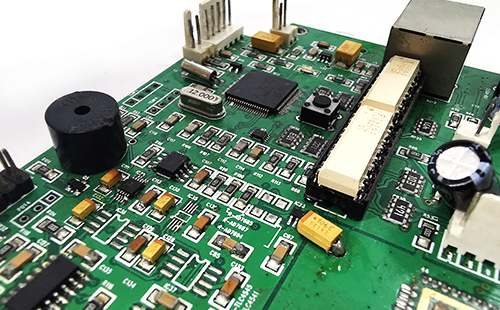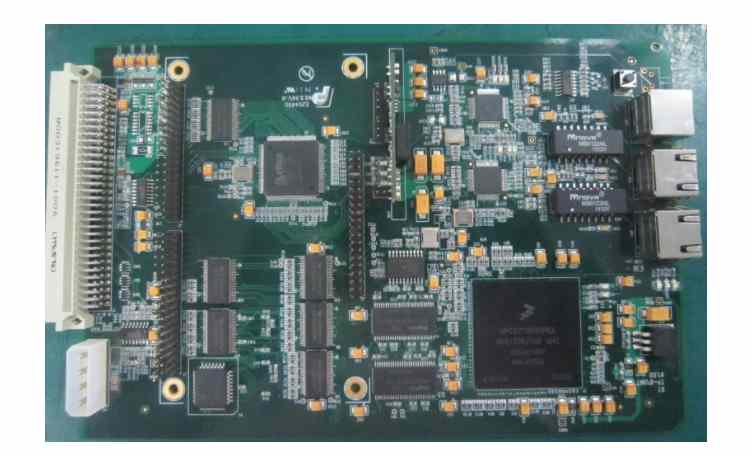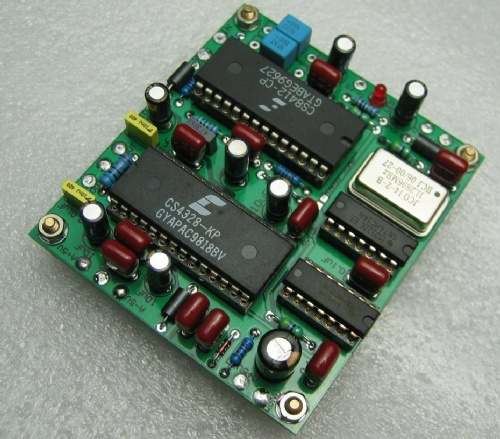
With increasing frequency, it becomes more and more difficult to control the phase consistency of printed circuit board (PCB) materials. Accurately predicting the phase change of circuit board materials is not a simple or routine task. The signal phase of high frequency and high speed PCBS depends to a large extent on the structure of the processed transmission line and the dielectric constant (Dk) of the PCB material. The lower the Dk of the medium (for example, the Dk of air is about 1.0), the faster the electromagnetic wave travels. As Dk increases, wave propagation slows down, and this phenomenon also affects the phase response of the propagated signal. When the Dk of the propagation medium changes, the phase of the waveform will change, because a lower or higher Dk will make the speed of the signal in the propagation medium faster or slower.
The DKS of circuit board materials are usually anisotropic, with different Dk values in the three dimensions (3D) of length, width, and thickness (corresponding to the x, y, and z axes). For some special types of circuit design, it is necessary to consider not only the difference of Dk, but also the effect of circuit manufacturing on phase. Phase stability and predictability will become increasingly important as PCB operating frequencies increase, especially at microwave and millimeter wave frequencies, such as fifth-generation (5G) cellular wireless communication network infrastructure equipment, and advanced driver assistance systems (ADAS) in electronically assisted vehicles.
So what exactly causes the Dk of the circuit board material to change? In some cases, differences in DKS on PCBS are caused by the material itself, such as changes in the surface roughness of copper. In other cases, the PCB manufacturing process can also cause Dk changes. In addition, harsh working conditions (such as high working temperature) can also change the Dk of the PCB. By understanding the characteristics of materials, manufacturing process, working environment, even Dk testing methods, and other aspects to study how the Dk of PCB changes. In this way, phase changes of PCB can be better understood, predicted and minimized.
Anisotropy is an important property of circuit board materials, and the properties of Dk are very similar to the three-dimensional mathematical "tensor". The different Dk values on the three axes lead to the difference in electric flux and electric field strength in three-dimensional space. Depending on the type of transmission line used in the circuit, the phase of a circuit with coupled structure can be changed by the anisotropy of the material. The performance of the circuit depends on the direction of the phase on the circuit board material. In general, the anisotropy of circuit board materials varies with the thickness of the board and the operating frequency, and materials with lower Dk values have less anisotropy. Packed reinforcement materials can also cause this change: circuit boards with glass fiber reinforced materials generally have greater anisotropy than those without glass fiber reinforced materials. When phase is the key indicator and the Dk of the PCB is part of the circuit design modeling, description and comparison of Dk values between two materials should be for Dk along the same directional axis.

Delve into designing Dk
The effective Dk of a circuit depends on how the electromagnetic wave travels in a particular type of transmission line. Depending on the transmission line, part of the electromagnetic wave propagates through the PCB's dielectric material, and part of the electromagnetic wave propagates through the air around the PCB. The Dk value of air (about 1.00) is lower than that of any circuit material, so the effective Dk value is essentially a combined Dk value determined by the combined action of the electromagnetic waves propagating in the transmission line conductor, the electromagnetic waves propagating in the dielectric material, and the electromagnetic waves propagating in the air around the base. The "Design Dk" is an attempt to provide a more practical Dk than the "efficient Dk" because the "Design Dk" considers the combined effects of different transmission line technologies, manufacturing methods, conductors, and even test methods for measuring the Dk. Design Dk is the Dk extracted during testing of materials in circuit form, and is also the Dk value most suitable for use in circuit design and simulation. The design Dk is not the effective Dk of the circuit, but it is the material Dk determined by the measurement of the effective Dk. The design Dk can reflect the real performance of the circuit.
For a particular circuit board material, the design Dk values may vary due to subtle differences in different areas of the board. For example, the thickness of the copper foil that makes up the wire of the circuit may be uneven, which means that the design DKS will vary with different copper thicknesses, and the phase response of the circuit formed from these conductors will also change. The roughness of the copper foil conductor surface also affects the design Dk and phase response, with smoother copper (e.g. calendered copper) having less effect on the design Dk or phase response than rougher copper.
The surface roughness of copper foil in PCB medium material with different thickness has different effects on the design Dk and the phase response of the circuit. Materials with thicker substrates tend to be less affected by the surface roughness of copper foil conductors. Even for copper foil conductors with rougher surfaces, the design Dk value is more similar to the medium Dk of substrate materials. For example, Rogers' 6.6mil RO4350B™ circuit board material has an average design Dk of 3.96 at 8 to 40GHz. For the same material with a thickness of 30 mil, the design Dk dropped to an average of 3.68 over the same frequency range. When the material substrate thickness is doubled again (60 mils), the design Dk is 3.66, which is basically the medium inherent Dk of this fiberglass reinforced laminates.
As can be seen from the examples above, thicker dielectric substrates are less affected by copper foil roughness and have relatively lower design Dk values. However, if the thicker circuit board is used to manufacture the circuit, especially at the millimeter wave frequency where the signal wavelength is smaller, it is more difficult to maintain the signal amplitude and phase consistency. Thinner circuit boards are often preferred for higher frequency circuits, where the dielectric part of the material has less impact on the design Dk and circuit performance. Thinner PCB substrates are more affected by the conductor in terms of signal loss and phase performance. They are also more sensitive to conductor properties (such as copper foil surface roughness) than thicker substrates at millimeter-wave frequencies, in terms of the design Dk of circuit materials.
How to select a transmission line circuit
At RF/microwave and millimeter wave frequencies, circuit design engineers use several conventional transmission line techniques, such as microstrip, strip, and grounded coplanar waveguides (GCPW). Each technology has different design approaches, design challenges, and associated advantages. For example, differences in the coupling behavior of GCPW circuits will affect the design Dk of the circuit. For tightly coupled GCPW circuits, and transmission lines with tight spacing, more efficient electromagnetic propagation can be achieved with minimal loss by using the air between coplanar coupled regions. By using thicker copper conductors, the coupling conductors have higher side walls, and the use of more air paths in the coupling region can minimize circuit losses, but it is more important to understand the corresponding effects of reducing the thickness variation of the copper conductors.
Many factors can affect the design of a given circuit and circuit board material. For example, the index of the temperature coefficient Dk (TCDk) of the circuit board material is used to measure the influence of the working temperature on the design Dk and performance. A lower value of TCDk indicates that the circuit board material has less dependence on temperature. Similarly, high relative humidity (RH) can also increase the design Dk of circuit board materials, especially for highly hygrometric materials. The characteristics of circuit board materials,PCB circuit board manufacturing process, uncertainty in the working environment, will affect the design of circuit board materials Dk. Only by understanding these features and taking them into account during the design process can their impact be minimized.







